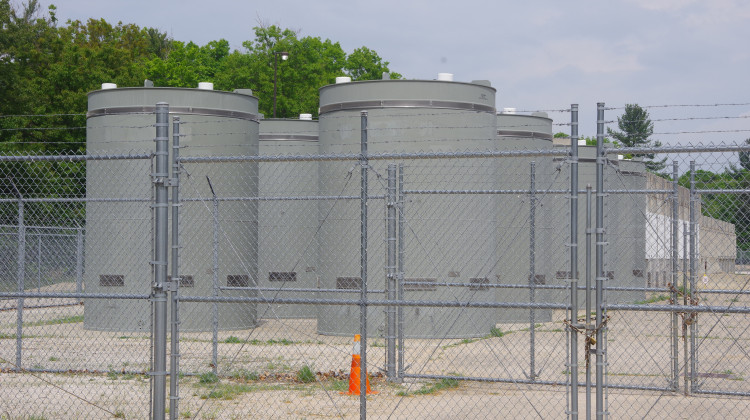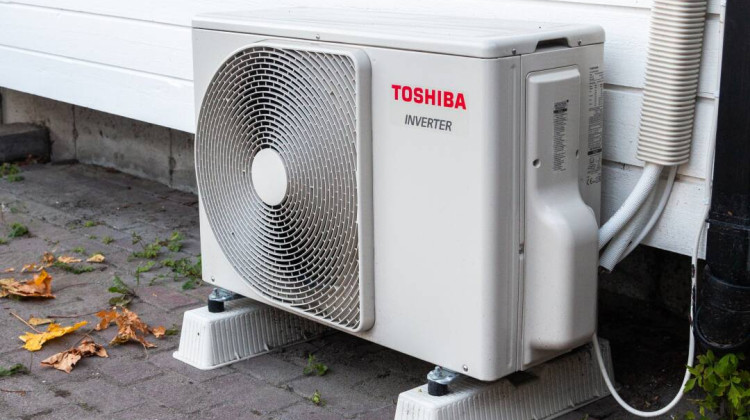
Dry casks sit at the site of the Palisades Nuclear Generating Station in southwest Michigan. Indiana gets some of its energy from the D.C. Cook nuclear plant just a few miles south of Palisades.
Michael Symonds / WMUKIndiana lawmakers are paving the way for smaller nuclear power plants to come into the state. A member of our audience wanted to know: Where does nuclear waste go? Right now, not very far at all.
At most nuclear power plants today, the waste — also called spent fuel — stays on the property where it was created.
"When fuel is removed from a reactor in a commercial nuclear power plant, it is hot in two ways," said David McIntyre, spokesperson for the U.S. Nuclear Regulatory Commission. "One, the temperature is very high. It is very hot — as we experience heat — and two, it's hot in the colloquial sense that it is very radioactive"
McIntyre said first the rods of spent fuel are placed in what's called a "spent fuel pool" — a deep pool of water where it will stay for about five years, cooling down.
After that, the spent fuel is loaded into steel containers that are welded shut and then placed in thick, concrete cylinders called dry casks. McIntyre said dry casks can last 100 years or more and are built to withstand natural disasters.

But these casks weren’t meant to store nuclear waste permanently. For decades, the federal government tried to make a permanent underground storage facility at Yucca Mountain in Nevada — but that project was controversial and eventually got canceled.
McIntyre said now the U.S. Department of Energy is looking for temporary sites to house the waste and, eventually, another permanent site as well.
“The next step is to work with several communities across the country and try to get somebody or some community to say, ‘Yes, we will host this facility," he said.
A 2022 law paved the way for small modular nuclear reactors or SMRs to be built in Indiana.
The first SMR hasn’t been built yet and it could be a long time before that happens. A project backed by the U.S. DOE was the closest to being complete, but it was canceled last year because the cost far exceeded what partners in the project had expected.
READ MORE: Bill paves the way for small nuclear reactors. But are they a financial and safety risk?
Join the conversation and sign up for the Indiana Two-Way. Text "Indiana" to 765-275-1120. Your comments and questions in response to our weekly text help us find the answers you need on climate solutions and climate change at ipbs.org/climatequestions.
Since there is no SMR currently operating, McIntyre said it's not clear what the waste would look like or how it would be disposed of.
“What we would expect would be that industry would come to us with new designs for storage systems to hold this type of fuel or amendments to existing designs showing that they can handle the different type of fuel and meet the safety requirements," he said.
Rebecca is our energy and environment reporter. Contact her at rthiele@iu.edu or follow her on Twitter at @beckythiele.
 DONATE
DONATE







 Support WFYI. We can't do it without you.
Support WFYI. We can't do it without you.